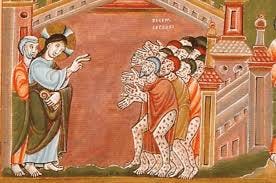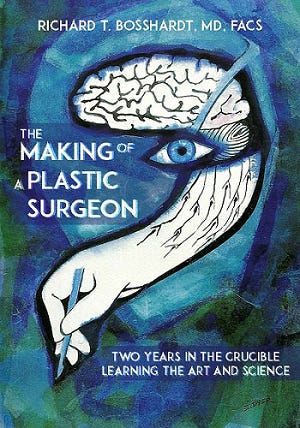Dealing With Leprosy in the 21st-Century
A guest post by Henry R. Salmans, III, Major (ret), USMC
“A man who works with his hands is a laborer; a man who works with his hands and his brain is a craftsman; but a man who works with his hands, brain, and heart is an artist.” Louis Nizer (1902-1974), American trial lawyer and author
Writing is a natural progression in a lifelong love of reading. At some point you want to come down from the stands and get into the game. At least I did. I consider myself a competent writer. Stephen King has said, “…it is impossible to make a competent writer out of a bad writer….and equally impossible to make a great writer out of a good one….it is possible with lots of hard work, dedication, and timely help, to make a good writer out of a merely competent one. Someday, I hope to be a good writer. Great writers, according to King, are gifted in a way that we mere mortals cannot “understand, let alone attain.”
Henry “Hank” Salmans, III is a friend and a retired U.S. Marine Corps Major. Relevant to this post, he is a clearly gifted writer who writes for the pleasure of it, and whose work I view with admiration and not a little envy. He kindly allowed me to share this piece with my readers.
When I first read it, I immediately went online to research leprosy, a disease with which I have no experience. Who knew it was genetically transmitted as well as in the usual infectious manner? Did I sleep through that lecture in medical school? Relieved to learn that I had not been under a misapprehension for my entire medical career, I returned to this essay and re-read it more carefully. Few conditions carried greater stigma than leprosy throughout history. The true meaning now came through in the beautiful prose. I will not say anything more so as not to spoil the pleasure of your own individual discovery.
Enjoy.
Dealing with Leprosy in the 21st-Century by Henry R. Salmans, III
I’ve carried leprosy in my bones for as long as I’ve been alive, though I only learned its name on an ordinary afternoon in a doctor’s office. It wasn’t the visit I’d expected—a fleeting ache, a minor complaint I thought could be swept away with a prescription or a kind word. Instead, I left with a word that landed like a stone: leprosy, ancient and heavy, a term that felt like it belonged to another time, another life.
This isn’t the leprosy of old stories, not the kind that scars the skin or sends you to the edges of the world. It’s quieter, hidden deep, invisible to anyone who doesn’t know where to look. Most days, it sleeps, a shadow stitched into my steps. But when life presses too hard—when grief or anger or exhaustion cracks me open—it stirs. It slips out in moments I can’t undo, in words that cut, in choices that betray the person I want to be.
The doctor’s voice was calm when she said there’s no cure. No pill to erase it, no knife to carve it out. There are ways to soften it, she told me—things to dull the ache, to blur the sharp edges for a while. But they’re temporary, like a lantern flickering in a storm. I asked, my voice trembling, “So this is mine to keep? Always?” Her nod was soft but certain: yes, until my days run out.
The deeper wound came when I learned this wasn’t something I’d caught, not a mistake I’d stumbled into. It was born with me, woven into my very being, passed down through generations like a thread of shadow in the blood. My parents carried it, and theirs before them, a quiet inheritance no one chose but none could escape. At first, that truth shattered me, as if my own beginning had marked me guilty.
For a time, I thought I’d have to wear this like a brand—a scarlet letter pinned to my chest, a whispered cry of “leper” trailing me through the world. I imagined eyes turning away, hands pulling back, as if my flaw defined me. But something in me refused that weight. I am not this leprosy, I told myself. I am not the sum of my stumbles, not bound to walk in shame. There’s one who bears no mark, no shadow—a light untainted, whose presence calls me to more than my failings. My name is tied to his, not to the brokenness I carry. In him, I am seen, known, held—not as a leper, but as one who belongs to something whole.
And yet, the leprosy remains. It’s there in my weakest hours, but so are the ones who love me. They’ve learned to read the signs before I do—the tightening in my voice, the distance in my gaze. They step in, not with pity or scorn, but with a steady grace that shields me when I can’t shield myself. They remind me I’m more than this hidden wound, that it doesn’t own me, even if it’s always there.
I’ve stopped searching for a cure. Instead, I’m learning to live with it—not in defeat, but in a stubborn hope. There’s a mystery in this, in carrying something broken yet being held together by love that doesn’t flinch. I am not alone in it, and that changes everything. Maybe, in the end, it’s not about erasing the mark but about finding the light that shines through it.
Semper Fidelis,
Hank
Major & Mustang Henry R. Salmans III
USMC (Retired)
Thanks for reading this. Please feel free to comment and/or pass this on.
Richard T. Bosshardt, MD, FACS
Although not as elegant as Hank’s prose, my book, the Making of a Plastic Surgeon- Two Years in the Crucible Learning the Art and Science, will inform an entertain you, providing a unique, honest glimpse into my world; the world of the plastic surgeon.




Beautifully written--and like you, I traveled down the medical journal rabbit hole. Who knew?
Hank -I am still confused. Who is the doctor the Holy Spirit, who helps us ?